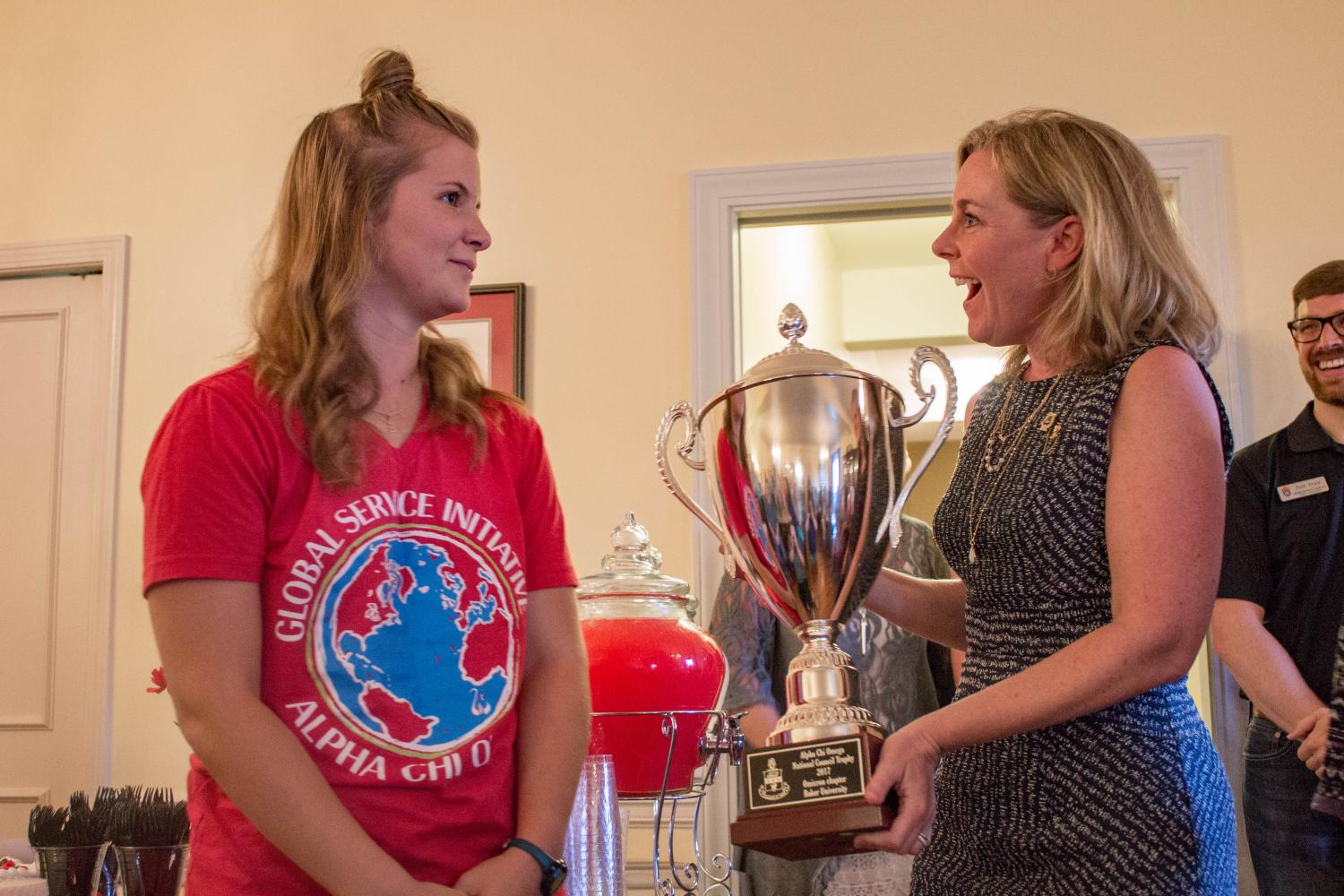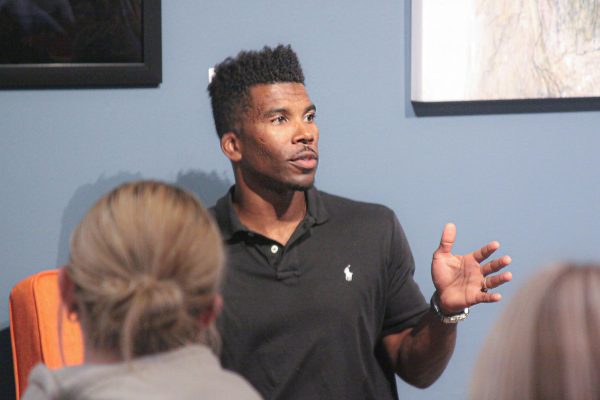Day in the life: Fraternity and sorority chapter presidents
Active Omicron Chapter President Amy Wysong accepts the National Council Trophy from Alpha Chi Omega National President Angela Costley Harris on Aug. 13. The sorority women were pleasantly surprised when both the former national president of Alpha Chi Omega, Diane Blackwelder, and the current president, Costley Harris showed up to present this award to their chapter.
With nearly 40 percent of the current student population involved, fraternity and sorority life is a vital piece of the Baker University puzzle, but these organizations do not run themselves. Beyond the numerous alumni and faculty members that have a hand in helping these chapters succeed, each has an active chapter president who acts as the face of the organization.
“What I enjoy most about being president of Zeta Tau Alpha is the relationships I have formed, both in the house and out,” senior Miranda Lindmark said. “I have become so close to the girls in the house, and I have been able to build a trusting bond with many of them. I hope to keep many of these relationships through the rest of college and beyond.”
In fact, the responsibilities are quite diverse. From keeping in contact with housing corporations to helping other officers stay on track with event planning, the roles of a chapter president are ultimately a catchall.
“Something completely different happens every day, and you just have to deal with it,” senior Joe Linder, president of Delta Tau Delta said. “It’s not that routine. The most challenging part is that whenever something goes wrong, even when it’s out of your hands, you feel like it’s your fault.”
On a more consistent basis, however, these seven individuals organize and execute weekly chapter meetings, keep their members up-to-date on campus-based events and requirements, as well as answer a multitude of emails.

“Answering emails has become my favorite pastime,” senior Amy Wysong, president of Alpha Chi Omega said. “Our advisers are very involved in our chapter, so keeping them up-to-date is definitely a priority.”
With all of that in mind, it may be particularly difficult to understand why these individuals have chosen to take on the roles that they have. Though elections are held every November, these chapter presidents take official command in January, serving a calendar-year-long term.
“I didn’t really think about being the president until I was the treasurer,” Linder said. “Usually when I get involved in things, I like to contribute as much as I can. I saw the stuff I thought we needed to improve on, and I thought that I could do a good job.”
As chapter presidents balance their coursework and on-campus involvement, a key to their chapter success is maintaining morale. These leaders act more as advisers to chapter members, as they are essentially the first person that everyone comes to.
“It’s really hard to remember that everyone is really busy when you are knee-deep in busy, too,” Wysong said. “Making sure that women are happy and healthy is a really important part of the job even though it’s not in the job description.”
These interactions are vital to each organization; however, for each of these presidents, it builds themselves in more way than one. As seniors preparing for graduation, each president will utilize these management and daily interaction skills to further themselves in their own careers.
“Many of [my connections] have given me opportunities outside the chapter,” Lindmark said. “I have been able to get to know other chapter presidents and Baker University faculty, who have provided a great outside support system.”
No matter what one’s interaction is with fraternity and sorority life, recognizing the crucial role that chapter presidents play within the Baker community can be beneficial. Without the continued guidance of these seven individuals and those who came before and will come after them, fraternity and sorority life at Baker may have never been what it is today.







